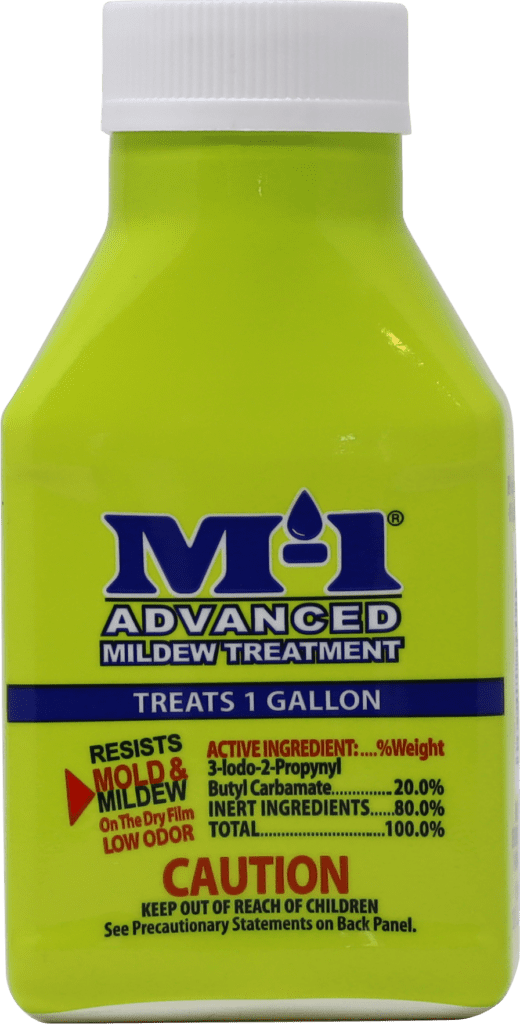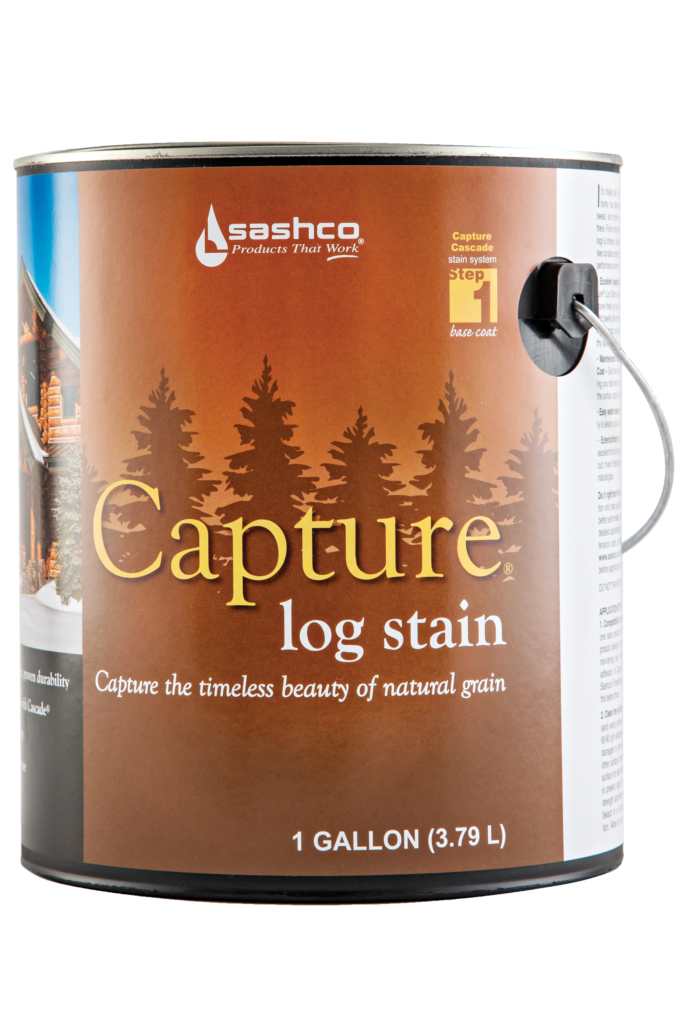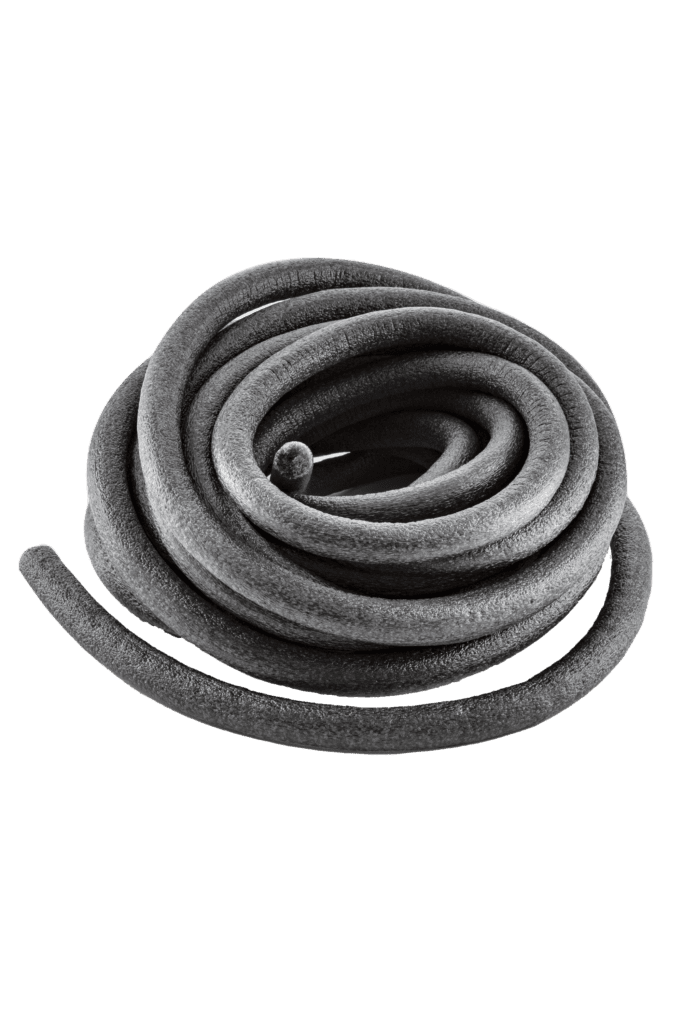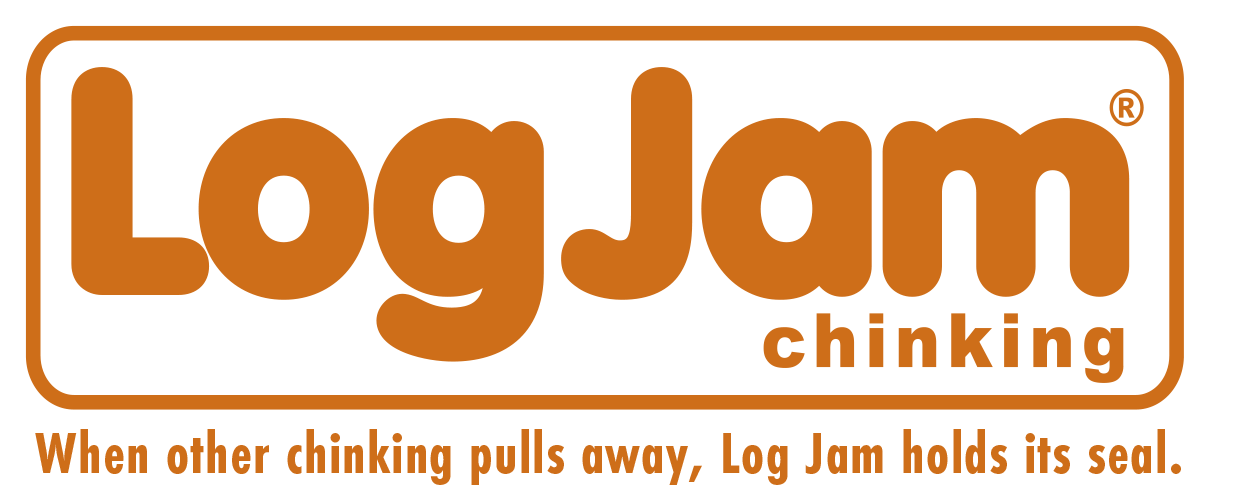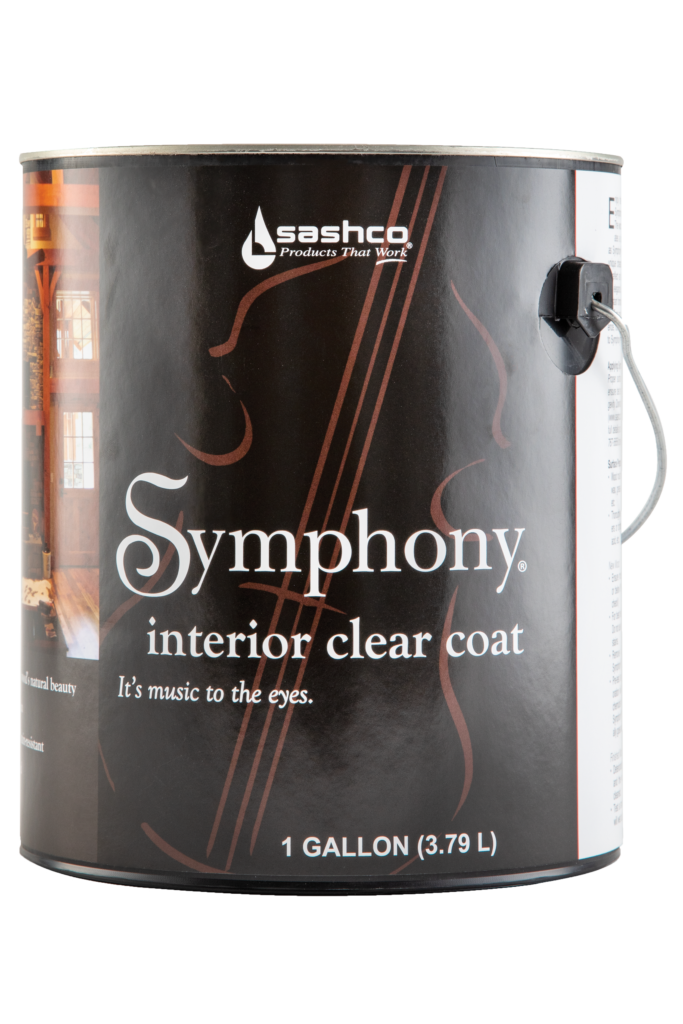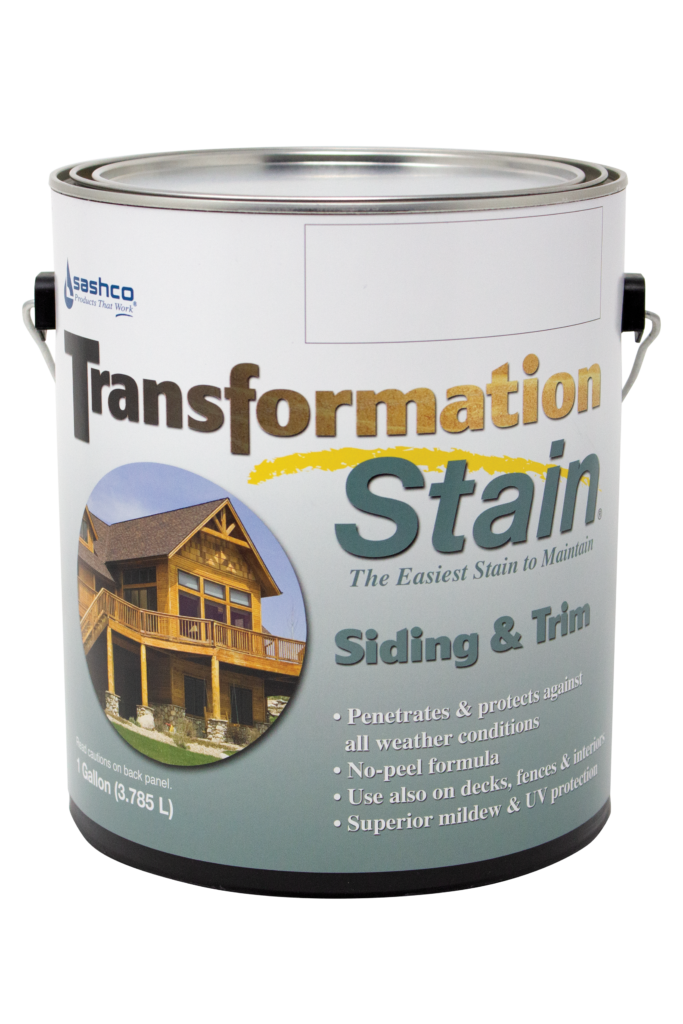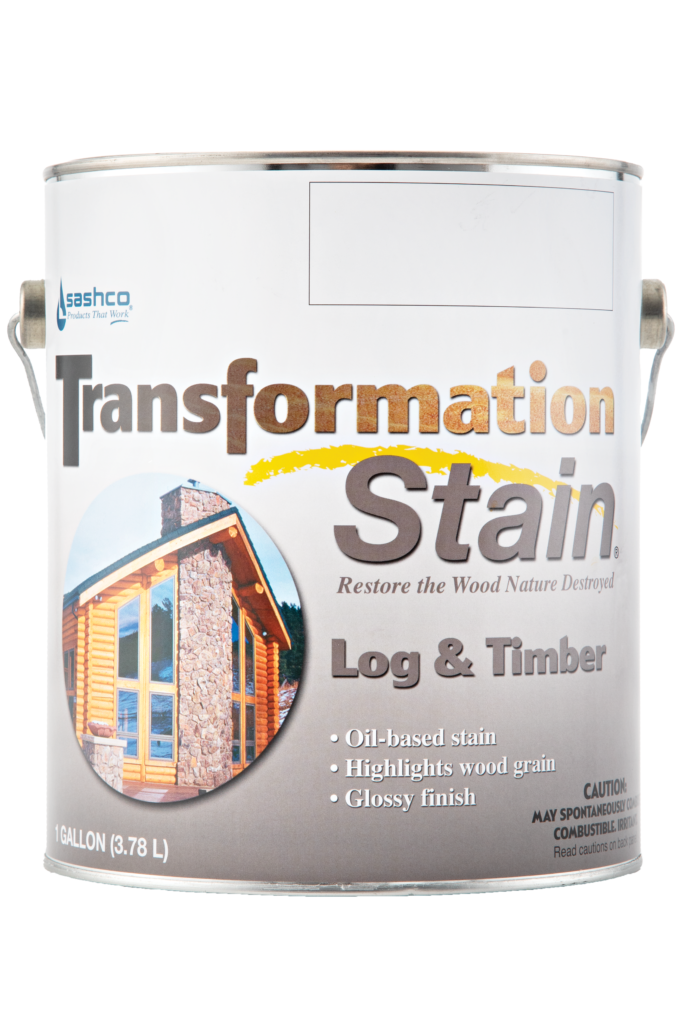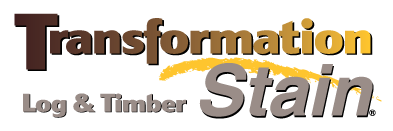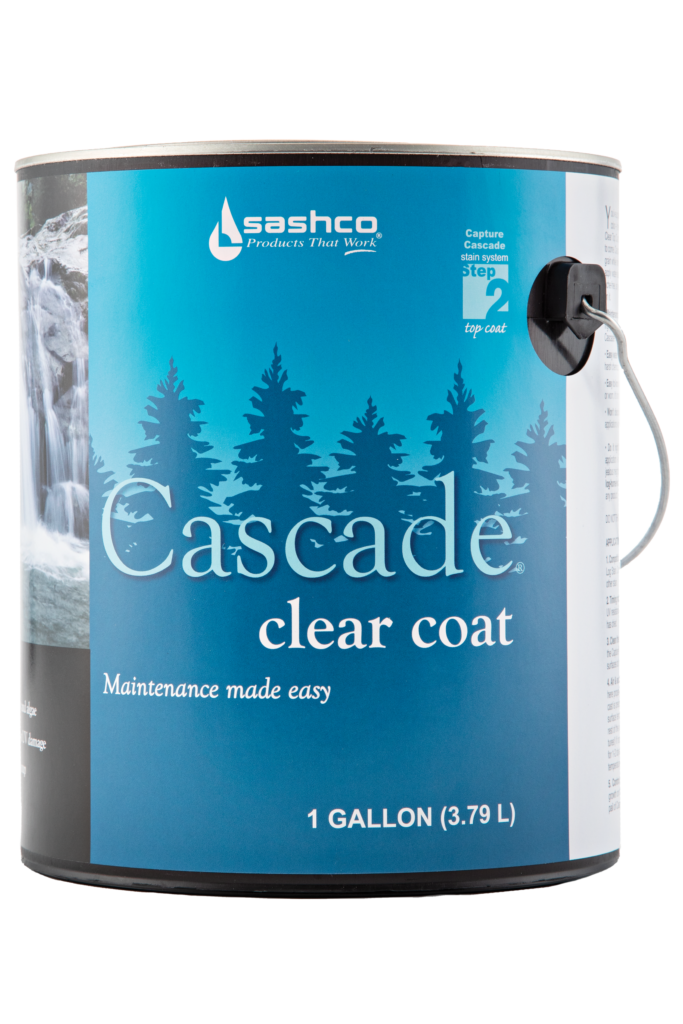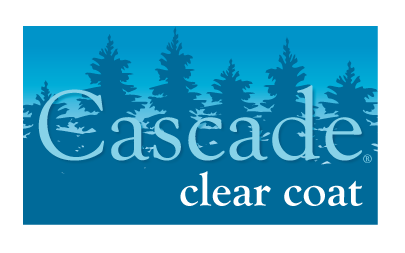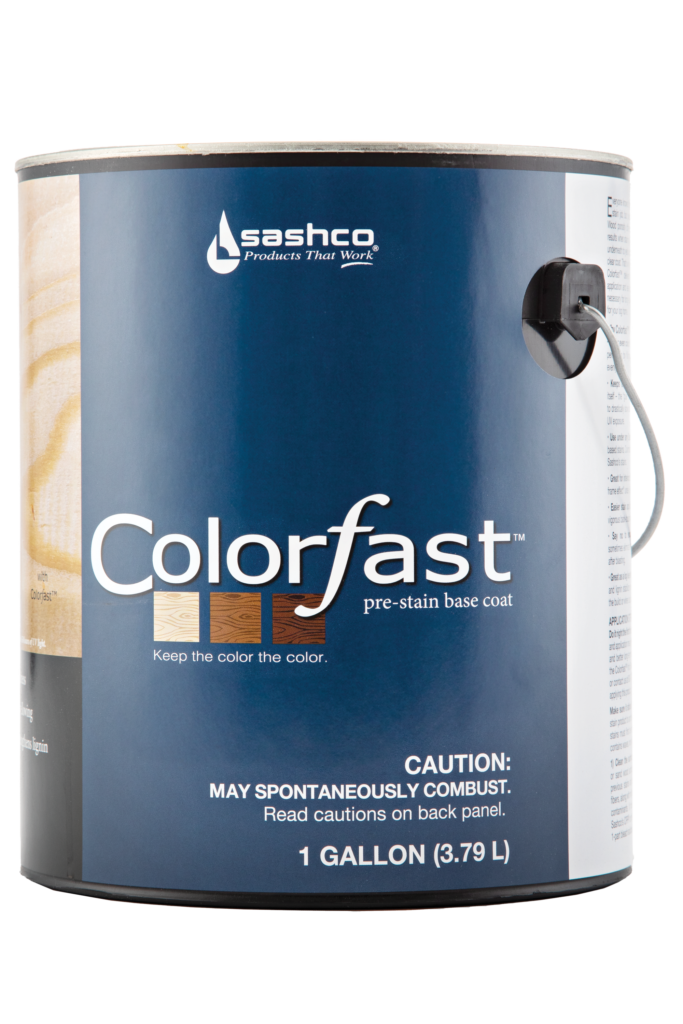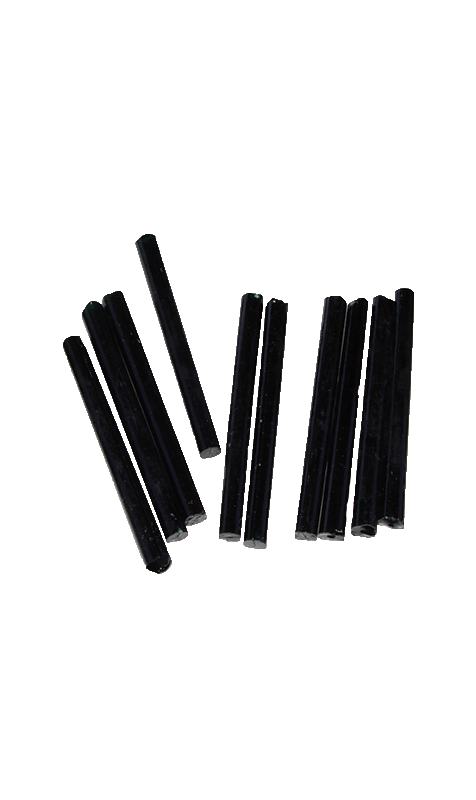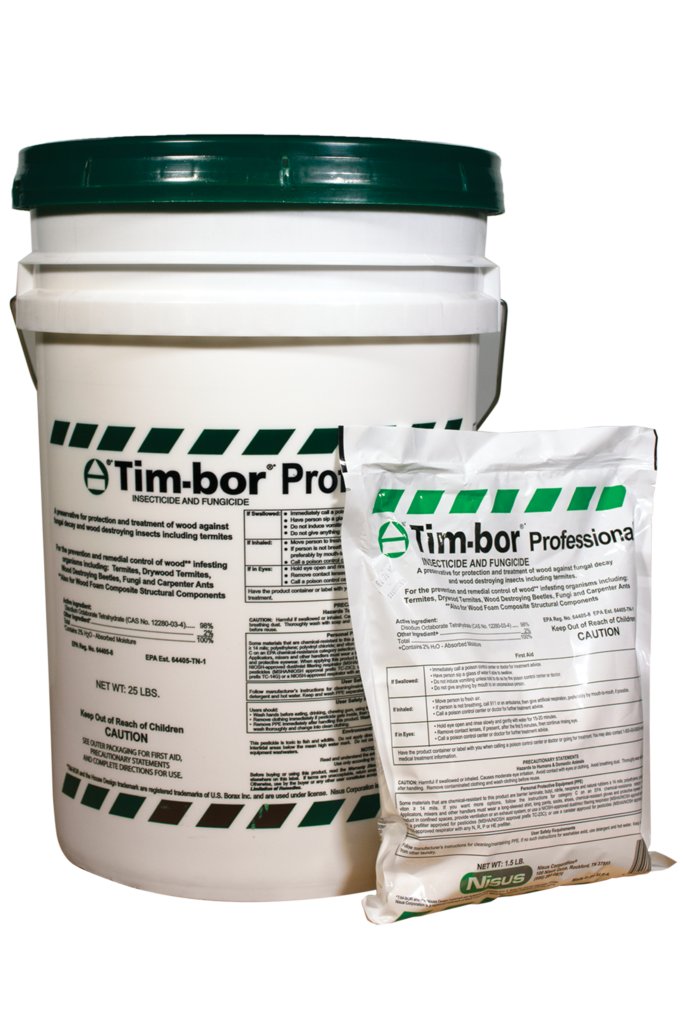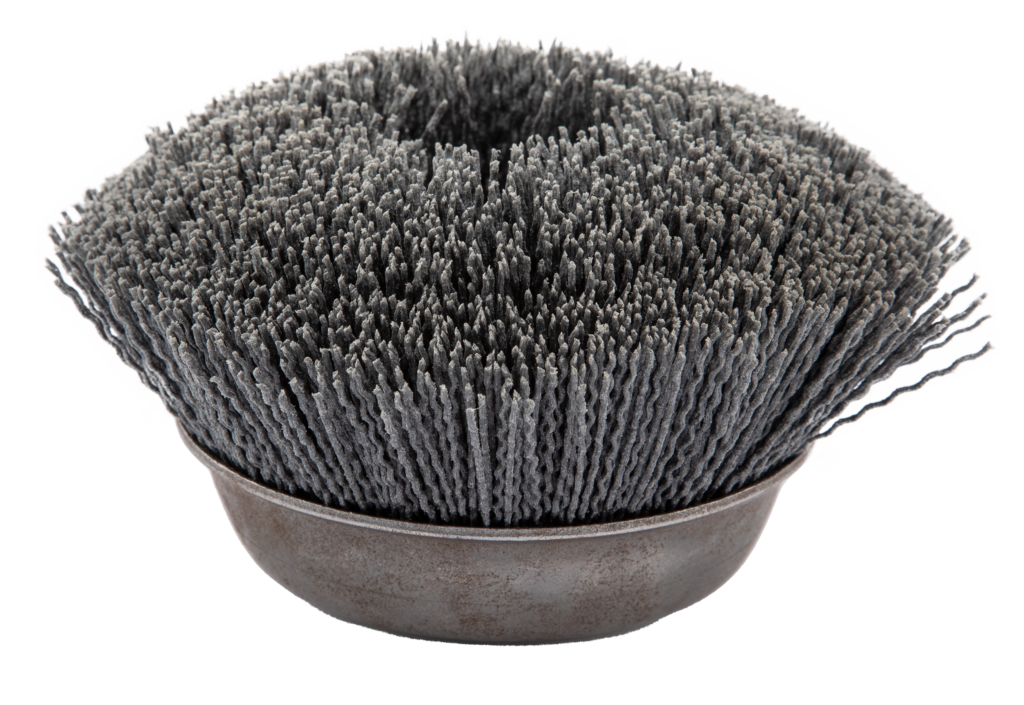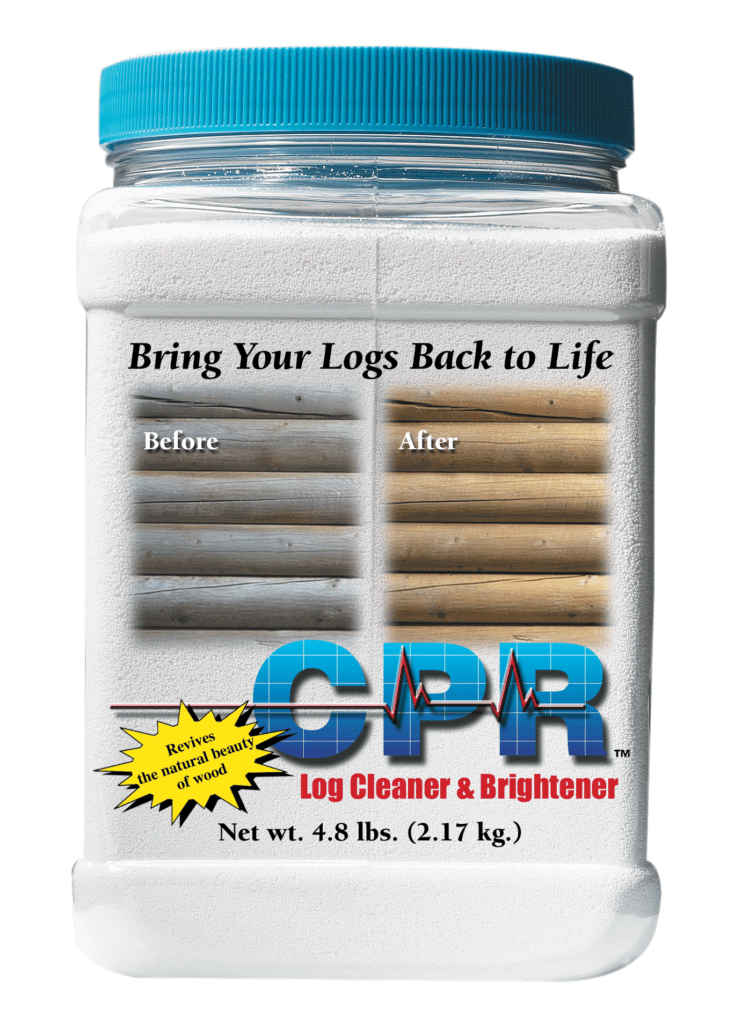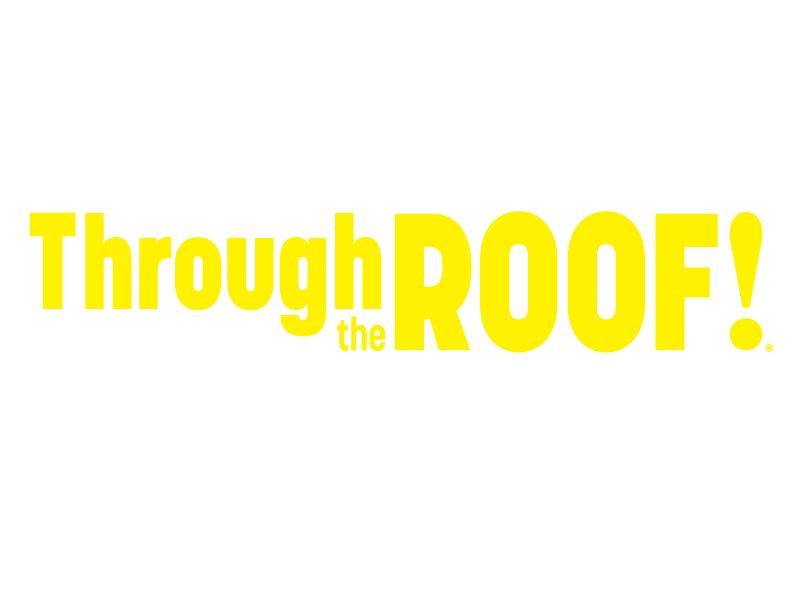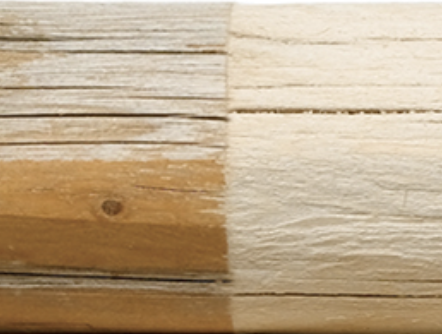
What You Need to Know Before Staining Your Log Home.
Prep Time
So now it’s time to prepare your wood for staining. Substrate preparation is the most critical step in achieving stain longevity. As Kurt Denman of Benjamin Moore® stated in the February 2007 edition of Coatings World magazine, “I cannot emphasize enough how critical proper preparation is to realize a successful staining project. It’s the ultimate determinant on how long the beauty of a job lasts.” Properly preparing the wood from the get-go will save you both time and money down the road.
Getting to Sound Wood
Before you apply any type of stain to logs or wood, the surface must be clean and free of any dust, debris, unsound surface wood, cambium, bark and mill glaze. The following photos of different wood prep results are general results. Your restoration project may end up needing several of these prep types to achieve that sound wood surface. The only way to know is to experiment and see what will get you that just-been-peeled-and-ready-to-build look.
The best overall cleaning methods are:
- Media Blasting
- Power Washing
- Hand Sanding
- Power Washing with Chemicals
We’ll go over the ins and outs of each method in detail below, plus the pros and cons of using chemical cleaners.
Media Blasting
Media blasting, especially with crushed glass, is especially good at removing stubborn stains, either fresh or old, and tends to leave less “felting” (wood fuzz) than power washing or chemical stripping, reducing the amount of secondary prep that may be necessary. This method also leaves the most desirable wood color. Media blasting is not for the faint of heart and, when done incorrectly, can damage the wood, so perfect your method and touch before blasting an entire home.
Power Washing
Power washing, when done properly, allowed to thoroughly dry, and followed by good secondary prep (sanding, Osborn® brushes, Buffy pads, etc.), can produce a good result. Ask us for more details on proper power washing. Check out our power washing video for details on proper power washing.
Hand Sanding
The best tools for this are Osborn® brushes or a 60- to 80-grit sand paper. This method doesn’t always leave the ideal wood texture for exterior finishing — the wood can be too smooth, which can impede stain adhesion. It is a great method to use for interior staining where a rough texture is not necessary and the smoother texture it leaves makes interior cleaning easier.
Power Washing with Chemicals
It’s always best to avoid chemicals, if possible, as they can be hard to neutralize and can later affect stain adhesion if not completely removed from the wood. That said, chemicals are sometimes needed to remove old, stubborn stains and/or to remove discoloration from tannins, age and UV damage. Always start with the least harsh chemical cleaner and move on to something more harsh only if necessary. It is also important to test your selected chemical cleaner, no matter which one it is, on the target wood. This is because it is not always possible to predict what color shifts may occur.
Chemical Cleaners
Below is a brief discussion of the most popular types of chemical cleaners, along with their strengths and weaknesses. They are listed in order of most gentle to most aggressive:
Sodium Percarbonate (Oxygen Bleach)
Sashco’s CPR®Log Cleaner & Brightener falls into this category.
Pros:
- Environmentally friendly and safe to use
- Breaks down into hydrogen peroxide, soda ash, and water – that’s all!
- Won’t aggressively corrode metal fasteners
- Little effect on stains applied if not totally rinsed off
- Kills mildew and strongly bleaches most types of wood
Cons:
- Can’t be used on unaged redwood or other high-tannin woods (causes discoloration)
- More expensive than other cleaners/bleaches
- Residual soda ash can appear as whitish patches underneath a stain if not well rinsed
Trisodium Phosphate (TSP)
This cleaner is usually combined with chlorine bleach.
Pros:
- Readily available
- Inexpensive
- Good cleaner
Cons:
- No bleaching action
- Residual TSP can interfere with stain adhesion
Chlorine Bleach
Pros:
- Strongly bleaches all types of wood
- Inexpensive
- Readily available
- Kills mildew
Cons:
- Chlorine gas can be released if mixed with other household chemicals (Chlorine gas can be hazardous or fatal)
- Kills plants, especially new growth
- Can degrade wood cells
- Very corrosive to metal fasteners (nails and screws)
- Can affect adhesion of stain if not completely rinsed from the surface
Oxalic Acid
Pros:
- Particularly good at removing tannin stains
- Best choice for redwood (other types discolor redwood)
- Best choice for removing rust stains
Cons:
- Does not kill mildew
- Is a poison and must be handled very carefully
- Must be thoroughly rinsed and neutralized to avoid a host of negative effects (poor adhesion, discolored wood, and others)
We hope the above helps you in your log home restoration project. As always feel free to contact us with any questions our friendly log home experts will be happy to answer them.
